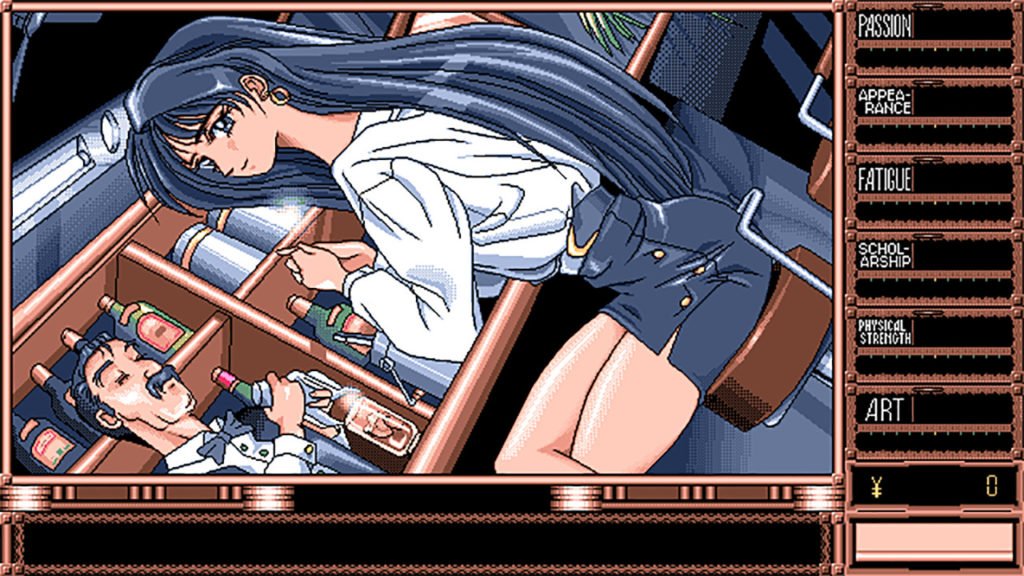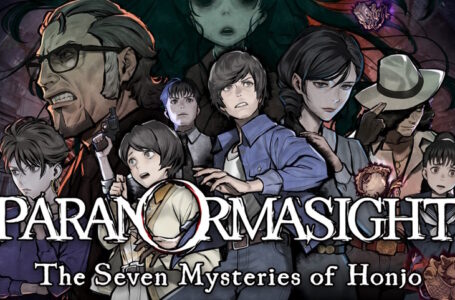The History of Lewd: True Love ’95
Ah, True Love ’95 — absolutely a defining part of my gaming tastes while I was growing up.
I remember when I first discovered that lewd anime-style games were a thing. I was still living at home, and when indulging in some illicit Internet browsing while my parents were out, I discovered that a lot of seriously hot artwork apparently came from games of some sort. At the time, I couldn’t quite picture exactly what sort of game might have these kinds of images — but apparently games like that existed.

Around a similar time, I learned about the existence of “dating sims” on consoles — along with the fact that none of them had ever come west, nor were any likely to come west in the immediate future. I thought the concept sounded intriguing, and I was eager to try them for myself — but I also knew that with precisely zero knowledge of Japanese at the time, I’d likely never be able to enjoy them to their full potential. Eventually I put two and two together; if “dating sims” were a thing, “dating sims with erotic scenes” were probably a thing, too. But would I ever get to try one for myself?
Then True Love ’95 happened. I forget exactly how I came into possession of a copy of it, but it most certainly was not through legitimate means. I believe it was one of many pieces of software that ended up passed around on Zip disks at university; since we were all stuck on dial-up networking in our halls of residence, it became a popular practice to use the university’s high-speed connection to download larger files and pop them on a Zip disk to take home. Inevitably, once someone discovered there were various places you could “acquire” software online, this led to pretty rampant piracy.

While most of us thought very little of it at the time, it was behaviour like ours that actually ended up doing for Otaku Publishing, a small localisation outfit who had been quietly making efforts to bring erotic Japanese games to a western audience. It was Otaku Publishing who brought True Love ’95 to the west — and, in turn, Otaku Publishing who brought many hours of joy and entertainment to lots of us. Because everyone who played True Love ’95 absolutely loved True Love ’95.
With that in mind, before I go any further, I should probably apologise to Otaku Publishing for not buying their game. Sorry. I bought a copy on Steam to atone for my sins, even though I can’t get it running at all on Windows 10, and even though Otaku Publishing itself doesn’t exist any more. It’s the least I could do.

But why was True Love ’95 so special? Well, quite simply because it was one of the first — and possibly only — honest-to-goodness dating sims to get localised for a western market. And this wasn’t simply a romance-themed visual novel that got referred to as a dating sim; this was the real deal. It was a game that was as much about time management and building up stats as it was about getting to know a variety of beautiful girls — and those stats were important. Pursuing one of the various love interests in the game wasn’t just a case of selecting the right dialogue choices; you needed to be able to back up your words with actions, or at the very least the ability to take action.
In True Love ’95, you take on the role of a young man coming to the end of his studies at “college”. It’s very obviously actually a Japanese high-school setting, but given that the original age of one of the characters in the game’s Japanese version was 14 years old — two years younger than the age of consent in Otaku Publishing’s native UK — the localisation rather wisely aged everyone up a smidge, given that all of the character routes in the game feature explicit sex scenes. (Writing on Hardcore Gaming 101’s forums in 2015, an individual who claimed to have worked for Otaku Publishing back in its heyday claimed that they didn’t want “the vice squad knocking at [their] door”, which is probably a reasonable concern for a small, niche-interest publisher.)
Over the course of three in-game months, you’re tasked with getting yourself into a suitable state to move on to the rest of your life — preferably having found your “True Love” from among the numerous cuties who attend your educational institution. In order to do this, you’ll need to work on your scholarship, appearance, physical strength and artistic expression — preferably building up your passion for what you do along the way — while ensuring you don’t get too fatigued or run out of money.

Each in-game day has three time slots: daytime, evening and night. You can assign a particular action to each of these slots, though on college days the daytime is automatically taken up by classes. There’s no skipping school here! Once the day comes to an end, your stats will adjust according to the actions you took — with the twist being that improving one stat inevitably causes another to drop. Get too obsessed with studying, for example, and your appearance, physical strength and artistic talent will suffer; spend too much time working to earn money and you’ll be too exhausted to do anything; take too many breaks and you’ll never get anything done.
As the game progresses, you’ll encounter events and dialogue scenes. Some of these are pre-defined based on your progress through the game’s calendar, while others show up based on the actions you take and your statistics. Towards the beginning of the game, you’ll get the opportunity to meet most of the characters and figure out what their most “favoured” stats are likely to be — the protagonist’s best friend comes in handy here, since he seems to know everything about everyone — but later on you’ll need to make a specific effort to pursue them.
Where True Love ’95 shines is in the characterisation of the various people you’ll meet. They’re all distinctive and unique — though at times they’re also a reminder of exactly how long we’ve been encountering certain anime tropes such as the sickly girl who is “probably anaemic”, the childhood friend who has been wanting to jump the protagonist’s bones since the beginning of time and, of course, the girl with whom you establish a relationship based on some sort of seemingly perverted misunderstanding.

Given that the game is about relationships, it’s fitting that each of the characters is memorable and fun to get to know. They each have their own little stories to follow through on — some of which are more serious than others — and the satisfaction of reaching the end of the game and finally being able to confess to your one True Love is immense.
Being a game from the mid-’90s, True Love ’95 may look a bit dated to a modern audience — though for my money, that 16-colour 640×480 PC-98-style art is hard to beat — but it has a distinctive sense of style about it. The localisation is a little inconsistent in places — particularly when it comes to basic things like capitalisation and punctuation — but it does the job in making the story understandable, and allows the characters’ unique traits to stand out.
The Hardcore Gaming 101 commenter mentioned above noted that the sheer volume of text in True Love ’95 meant that it wouldn’t have been cost-effective to hire professional Japanese translators to work on the game, so they instead gave it to a Japanese girl they knew in London, then edited the script to remove any clumsy “Engrish” translations and swap overly Japanese references to something a western audience would be able to understand. Being a bit pressed for time due to the master being shipped by post around the world rather than electronically meant that an errant line break was missed in the editing pass, which caused a few scenes to inadvertently attribute dialogue lines to the incorrect characters. Whoops!

In a way, though, it’s the rough-and-ready nature of True Love ’95 that gives it a lot of its charm. Back in the day, we’d already acquired it through illicit means, so the fact it felt like the digital equivalent of a battered old magazine someone had found in a railway siding only made it all the more appealing. Today, it provides a reminder that there really are a lot of incredibly talented localisers working in the industry today — and makes one wish for a remaster of this all-time classic that perhaps works a bit more reliably on modern machines!
We’re a way off that possible remaster, largely because the original source code for the game was lost a long time ago, so any “remastering” efforts would have to be a complete rebuild from scratch. But at least the game is still officially available in some capacity to modern audiences — and for those new to it to explore for themselves.
If you want to give an all-time classic of ’90s dating sims a go for yourself, you can take the risk of picking it up from Steam here on the understanding you might struggle to get it running, or you can play the game for free in your web browser thanks to the sterling efforts of The Asenheim Project.
However you choose to do it, time spent with True Love ’95 is time well spent — particularly if you’re interested in modern takes on the dating sim and how they relate to the classics. It’s truly a legend of lewd gaming — and highly likely a defining influence on a whole generation of Japanese gaming enthusiasts.
Join The Discussion
Rice Digital Discord
Rice Digital Twitter
Rice Digital Facebook
Or write us a letter for the Rice Digital Friday Letters Page by clicking here!
Disclosure: Some links in this article may be affiliate links, which means we may earn a small commission if you make a purchase after clicking on them. This is at no additional cost to you and helps support Rice Digital!
- Letter from the Editor: passing the torch - June 30, 2023
- Super Woden GP 2 is looking promising - June 30, 2023
- Inti Creates is making a 32 bit-style Love Live action platformer - June 26, 2023







